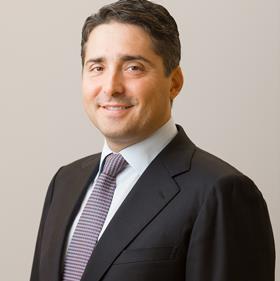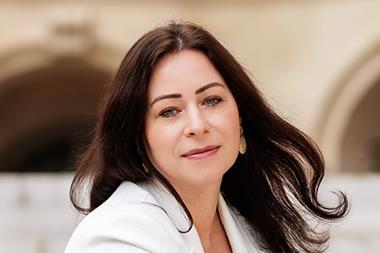Growing investor demand for sustainable real estate is fuelling a supply shortage and driving green lending, writes David White
Lending volumes in European real estate markets have been relatively subdued in the past two years, owing largely to a slowdown in transaction activity.
However, there are still areas where demand for debt financing has not only remained high, but continues to grow.

Chief among these is green lending – defined as loans against assets which seek to meet growing sustainability and decarbonisation measures.
Commercial real estate lending is fast becoming a two-tiered market, with green lending expanding at a speed which is captivating to witness, matched only by the size of the market opportunity, with demand estimated to be north of €100bn annually, according to the European Commission.
The reason that green lending is bucking the industry-wide trend of falling lending volumes is due to the enormity of the underlying goal. We know that the built environment poses some of the thorniest challenges to Western economies’ net-zero ambitions.
For instance, the Department for Business, Energy and Industry Strategy has made clear that 40% of UK energy consumption comes from powering buildings, with heat a particularly important part of this.
The EU estimates that its member states alone will need €275bn of capital every year until 2030 to have any hope of eliminating the investment gap and reaching its proposed target of a 55% reduction in emissions.
This extends outside of commercial areas and into residential. While the question over who will fund the refurbishment of homes remains hotly contested because of the dispersed nature of ownership in the residential sector and financial constraints on individual homeowners, institutional real estate investors with formal commitment to ESG targets are leading the way in addressing this demand.
Of the $500bn in green bonds and other debt instruments issued worldwide every year, real estate accounts for a substantial proportion.That is only going to grow, for several key reasons.
First, there remains huge pent-up demand for green refurbishment of existing commercial building stock. This is driven partly by tenants’ own preferences.
JLL’s data shows that 83% of office occupiers believe that climate risk is financial risk, with similar numbers also expecting carbon emissions reduction to be a key part of their corporate strategy.
Sponsors and developers are adjusting their plans for acquisition, refurbishment and development accordingly.
And on the supply side, expectations about external regulation are having a major impact on capital allocation decisions. Almost every investor we speak to has a growing list of ESG requirements they want to see in their portfolio holdings, and this extends to their private-credit investments.
Regulations, such as the Sustainable Finance Disclosure Regulation, setting out mandatory ESG disclosures and government targets mean that real estate equity funds have more motivation to move into greener assets, so it is in their interests to acquire more environmentally-friendly projects. These new projects require more funding, and hence the demand for green loans goes up, too.
Second, evidence is starting to emerge showing that assets with good sustainability credentials are demonstrating outperformance.
In May last year, CBRE found that office buildings with sustainability certifications earn a 6% rental premium over their non-certified peers.
So, with the chance to earn higher rents, boosting the upside available to equity investors and better prospects for exit liquidity, we should expect the supply of money to buy and to build these properties to increase in turn.
From the perspective of the borrower’s financial incentives, the discount in margin that they can achieve with a green loan may seem small today.
However, we believe the premium to borrow against non-ESG assets in the future will be substantial – making the effective discount far greater.
Moreover, because capital flows into green lending are growing much faster than traditional lending, borrowers are paying attention to where the supply-demand dynamics are tending in their favour.
Forward-thinking borrowers are enacting green initiatives into their business plans. This not only unlocks cheaper financing, but also attracts better tenants, and provides for greater liquidity prospects when they come to sell the asset.
Finally, and most simply, the world is only moving in one direction – towards decarbonisation. To hold an asset with a large, stagnant carbon footprint is to hold a value sink. Governments are only going to punish this more as time goes on, and the activity we are seeing in green lending now is led in part by this realisation.
To summarise, there are many solid reasons for the flow of green lending capital to continue.
Occupiers, buyers, and underlying investors are increasingly carbon conscious, and this is driving a potential undersupply of product which they can lease, buy, or invest into. And regulatory deadlines are getting closer across Europe. We predict that this will further drive green lending.
The headlines about the real estate industry suggests the industry has stalled, but the data says that green initiatives, and green lending, may well be a substantial part of our future to reignite growth.
To read the latest IPE Real Assets magazine click here.












